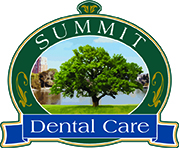
The dental drill is most patients’ least favorite part of a dental procedure. Because of this, dental researchers and technology developers have spent years searching for alternative means of treatment. We’ve emerged with the dental laser. Laser use in dentistry improves patient comfort in a few key ways. This blog post addresses the role lasers could play in your dental treatment, as well as what that treatment is going to feel like.
How Do Oakland Dental Lasers Work?
When using a dental drill, tissue is manipulated by means of friction. This friction puts pressure and heat on the site of treatment, causing the patient discomfort. Lasers take a different approach. A laser focuses a narrow beam of a certain wavelength of light on a portion of tissue. The tissue is ablated (vaporized) with much less heat than a drill produces. Because of the nature of dental lasers, they carry the following advantages:
- Minimal downtime
- Less bleeding
- Faster treatment
- More specific dental work
- Fewer side effects from treatment
- Less need for anesthesia during a procedure
- Lowered chance of infection
- A less stressful treatment for the patient – lasers don’t offer the same frightening sights and sounds of the dental drill
When Can Lasers Be Used in Dentistry?
Dental lasers can be used in hard and soft tissue applications (to affect both teeth and gums). The procedures during which you may receive dental treatment include
- Getting cavities filled
- Teeth whitening (as a catalyst for the whitening agent)
- Periodontal disease treatment
- Gum surgery
- Dental contouring
- Prep for crowns or veneers
- Biopsy of questionable tissue
- Curing fillings and bonding resin
Once you’ve experienced dental laser treatment, it will be hard to go back to a standard drill. We’d love to show you how comfortable and relaxing your next procedure can be – with the aid of a dental laser. Get in touch with Summit Dental to schedule your next exam.
